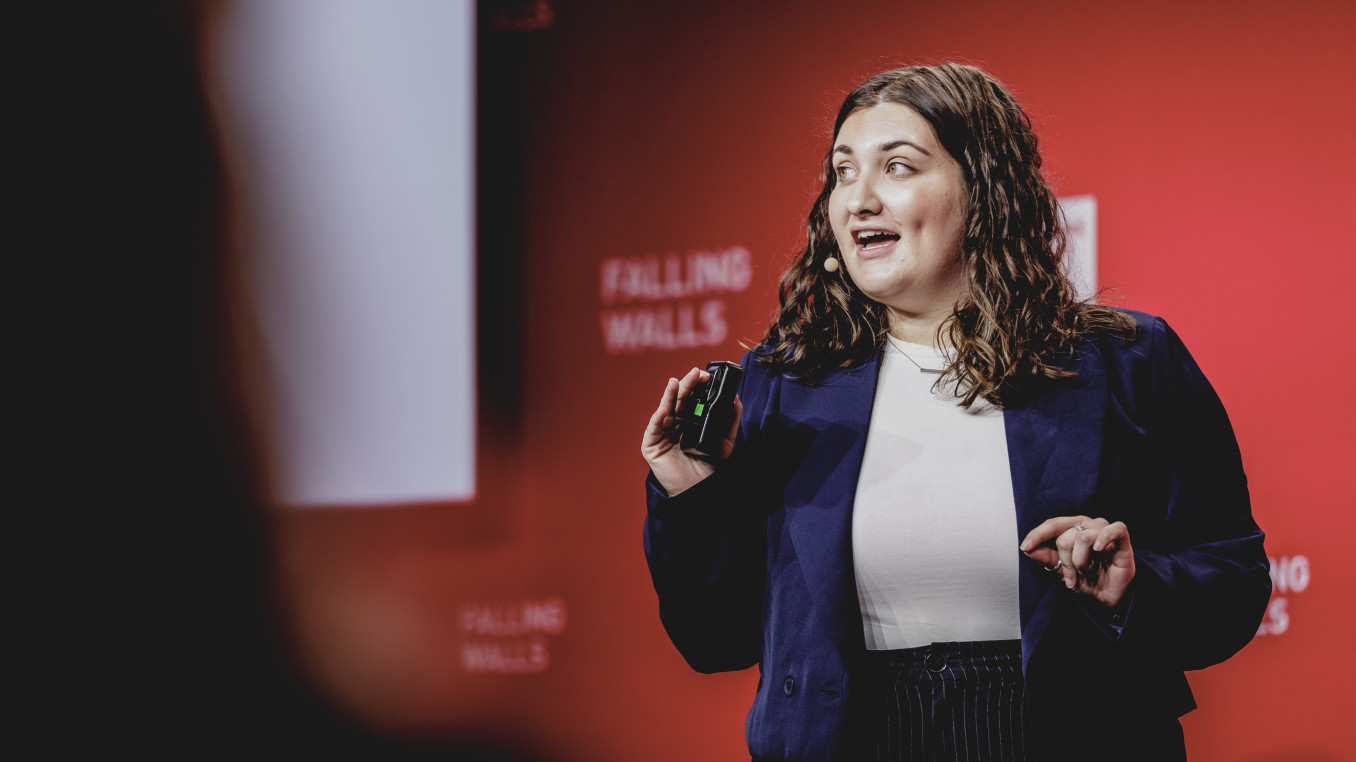Breaking the Wall of Plastic Circularity
Breaking the Wall of Plastic Circularity
Global Call 2025 Finalist Interview: Physical Sciences
Athina Anastasaki started her independent career as an assistant professor at ETH Zurich in 2019 and was promoted to associate professor in early 2025. She is the Head of the Laboratory of Sustainable Polymers, and her group focuses on modern polymer chemistry and recycling methodologies.
Which wall does your research or project break?
Our research aims to break the wall of plastic circularity. Although indispensable in our daily lives, plastics have led to serious environmental concerns ranging from landfill accumulation to microplastic contamination.
Addressing these challenges necessitates a transition to a circular economy through recycling. Unfortunately, the predominant method, thermomechanical recycling, results in downcycling into lower-grade products via reduction of molecular weight. To circumvent product deterioration, alternatives such as “(photochemical) upcycling” and chemical recycling to monomer have been explored.
Chemical recycling is a highly appealing option as it not only establishes the smallest closed-loop cycle but also circumvents product deterioration (i.e. downcycling) via the synthesis of virgin-grade materials, with the option of even upgrading their properties.
Vinyl polymers possess all-carbon backbones that render them chemically stable (e.g. from hydrolysis) but challenging to deconstruct due to the absence of any heteroatom-associated weak links. The most conventional approach to break these bonds is pyrolysis, an industrially important reaction, but the extreme temperatures required (>400 °C) leads to energy waste and undesirable byproducts. For example, pyrolysis of poly(methyl methacrylate) (PMMA) leads to formation of 2,3-butanedione, a compound that imparts a pungent odour to the recycled PMMA. Our group is actively exploring avenues to alleviate these hurdles.
What is the main goal of your research or project?
Our research aims at alleviating current hurdles of chemical recycling by addressing three important considerations.
- First, lower reaction temperatures should be utilised to not only avoid unnecessary energy waste but also to significantly suppress and ideally eliminate any potential byproducts or side reactions.
- Second, quantitative reaction yields need to be achieved meaning that the starting polymer can be fully converted back to monomer.
- Third, we seek to utilise inexpensive and environmentally friendly additives to aid our recycling processes while at the same time ensuring they are scalable.
By addressing these criteria, our approaches will become relevant to industry and be able to compete with current commercial practices. Another important aim of our research is to chemically recycle materials that are currently considered “unrecyclable” due to both kinetics and thermodynamic constraints.
Although in principle most polymeric materials can be recycled by simply employing higher temperatures, in reality most polymers will burn prior to reaching the required temperatures. This barrier significantly limits the materials that can be recycled.
To overcome this, we seek to enhance our thermodynamic and kinetic understanding of such processes and ultimately develop strategies to alter these fundamental principles and expand the scope of recyclable materials.
What advice would you give to young scientists or students interested in pursuing a career in research, or to your younger self starting in science?
Advice to young scientists interested in pursuing a career in research:
With more and more people acquiring PhD degrees, a career in research has become more competitive than ever. This means that we often have to follow very specific guidelines and advice in order to succeed and get our dream job. For instance, one often has to move several times prior to securing a permanent academic position. But what if you cannot move for personal reasons? If you look closely, there are always exceptions, those individuals who manage to stay in their home country. Figure out what you want on a personal level and then plan to be the exception to the rule, if necessary.
Young scientists also face a constant pressure to maintain a consistently outstanding publication record throughout their careers. Do not let this stress you out and instead prioritise what is important to you. Is a project impactful but requires four years to be realised? Take this risk while trying to publish shorter papers.
Are you considering starting a family before finding a permanent position? Go ahead and do it because there will always be challenges along the way, even with a permanent position! Find mentors that do not simply say what you want to hear. Instead try to embrace those who listen to you and your needs and advise you accordingly.
What inspired you to be in the profession you are today?
I decided to become a teacher, and ultimately a professor, because I wanted to continue learning throughout my life. I was lucky to have many great teachers throughout my own education, and they can certainly be credited in part for this decision.

